
Inside Toronto's secret history warehouse
Did you know that the City of Toronto owns over 150,000 historical objects, and that they are hidden away at two sites within the city?
Heritage Toronto recently offered its members a behind the scenes tour of the city's main storage facility, a perk well worth the membership price. A small group was toured around the facility, from the basement up to the fifth floor, double-high ceilinged room, by Alex Avdichuck, Supervisor of Collections and Conservation for the City.
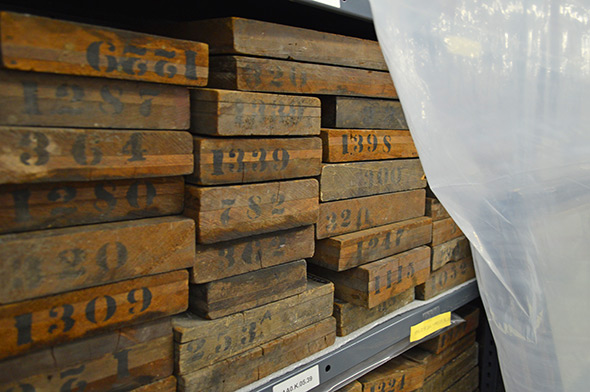
We were welcomed by Ross Fair board member of Heritage Toronto and also a professor at Ryerson where he teaches a popular course on the history of Toronto.
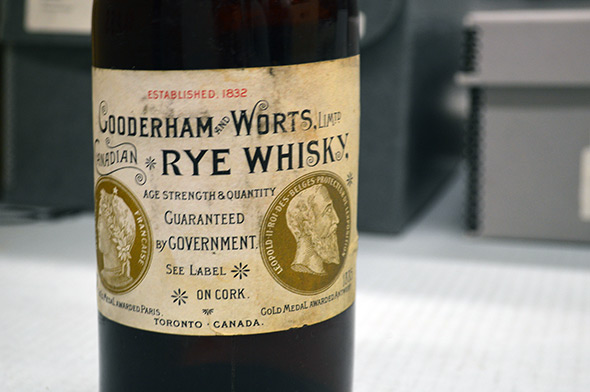
While some of us may think that the discussion about the need for a city of Toronto museum is somewhat recent, Avdichuck reminded us that the desire has been expressed since the 1930s. While the most recent talks around the Museum of Toronto have yet to come to fruition, the artefacts remain preserved in the hopes that someday they'll get a more public showcase.
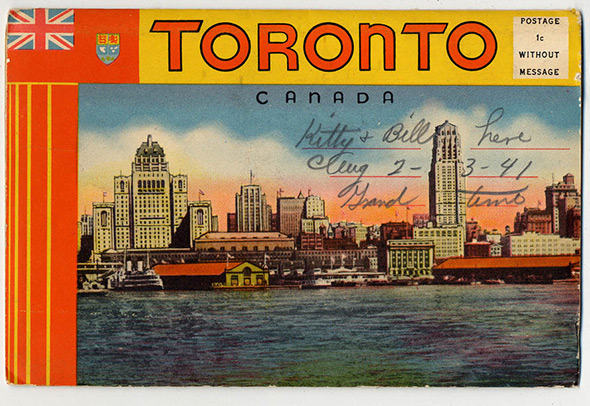
The building I visited is a non-descript structure on a formerly industrial street in the west end. It was purpose-built as a storage facility in the early twentieth century, and it became home of the City of Toronto museums in 1980. They don't advertise what's inside, and they don't want everyone knowing the wealth of historical riches housed here.
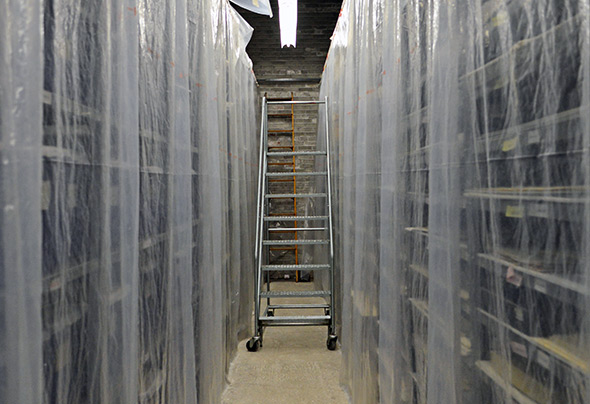
While it's well-suited for storage, it's about 50% over-capacity. A second building houses most of the large items the city owns, including watercraft from the now closed Toronto Marine Museum.
Other oversized items have been loaned to museums in Halifax, Kingston, and various historic sites in Toronto. Avdichuck argues (quite rightly) that it's better to have things like a locomotive, airplane, and boat being enjoyed by museum-goers in other places.
Midsize items like portions of the columns from the former Bank of Toronto building (lead photo), which was demolished to make way for the TD Centre in the 1960s, are held here along with a vast collection of smaller objects like bottles from the Gooderham and Worts Distillery and even Toronto Blue Jays memorabilia.
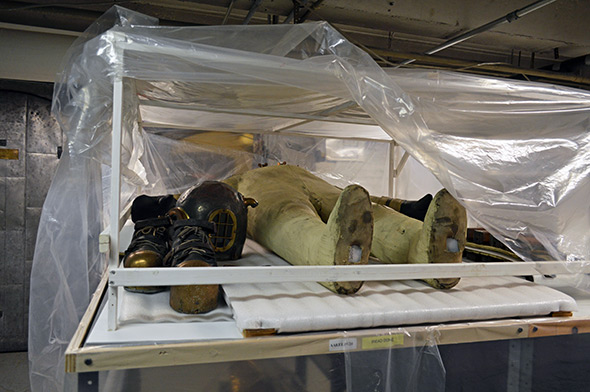
Many of the items belonging to the City are pieces of ephemera connected to Toronto, and have come from two collectors, Larry Becker and Morris Norman.
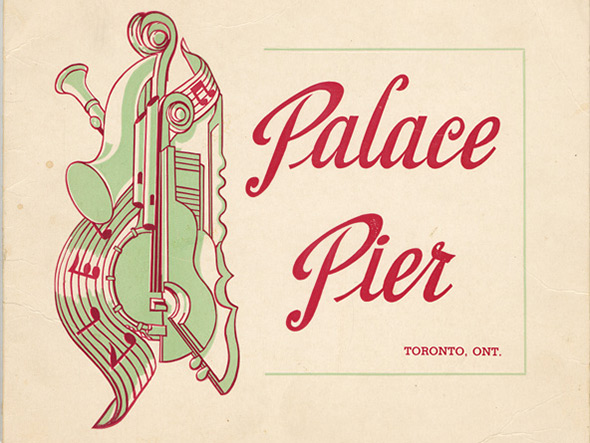
The city has all sorts of interesting little things that people often threw away, but have been gathered and preserved, including packaging, tickets, flyers, advertisements and the like. Anything connected to Toronto, including things produced by Toronto factories, ads selling products to Torontonians, and posters for leisure activities in the city tell stories about the history of this place. Norman donated 15,000 such objects which are still being catalogued by city staff.
We were allowed to peek behind the sheets, and a few items were taken out for us to have a look at. I complained to Dr. Fair that I wished all of these things were accessible, digitized, searchable, and visible to the public, and he said "What you want is a museum!"
And it's true.
A peek into the holdings of the city only make me wish it was all on display, in a beautiful new (or old!) building, to be visited by history buffs and tourists alike. As Avdichuck said at the end of our tour, these items have been collected with the purpose of telling the story of Toronto. "We have stuff with stories," she said.
For now, you can see one hundred artefacts, paired with stories from one hundred Torontonians, as part of the Toronto Museum Project. But that, of course, is just a snippet of the secret storehouse of history Toronto has lying in wait.
Alison Norman is a historian who lives in Toronto. She teaches in Canadian and Indigenous Studies at Trent University.
Photos by the author and via Heritage Toronto
Latest Videos
Latest Videos
Join the conversation Load comments







